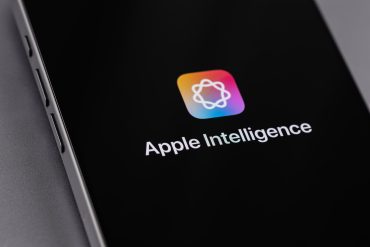
- AI
Apple Explores Siri Partnerships with OpenAI and Anthropic
6 minute read

Apple explores AI assistant partnerships with leading tech firms as voice assistant market surges toward $51 billion
Key Takeaways
- Apple explores AI partnerships with Anthropic and OpenAI to enhance Siri’s capabilities amid growing competition, with licensing fees potentially reaching multibillion-dollar annual costs.
- Siri enhancement delayed until 2026 as Apple faces technical challenges and internal tensions, including recent departures of senior AI engineers and team threats to quit.
- Apple stock drops 20% year-to-date making it the second-worst performer among Magnificent Seven stocks, as AI assistant market projects explosive growth to $51 billion by 2027.
Introduction
Apple faces mounting pressure to revitalize its struggling AI assistant Siri as the company explores unprecedented partnerships with leading artificial intelligence firms Anthropic and OpenAI. The iPhone maker’s willingness to consider outsourcing Siri’s core functionality marks a significant departure from its traditional approach of developing proprietary technology in-house.
This strategic shift comes as Apple acknowledges it has fallen behind competitors like Google and Amazon in the rapidly evolving AI landscape. The company’s internal AI development efforts have struggled to match the advanced capabilities demonstrated by rival assistants powered by cutting-edge large language models.
Key Developments
Apple has reportedly asked both OpenAI and Anthropic to train versions of their AI models that can run on Apple’s cloud infrastructure for testing purposes. This approach aligns with Apple’s privacy-focused strategy while enabling integration of external AI technology that could dramatically enhance Siri’s performance.
The company continues developing an internal project dubbed “LLM Siri” that uses proprietary AI models, highlighting a dual-track approach to AI development. However, significant delays have forced Apple executives to acknowledge that promised Siri features need more time to meet the company’s quality standards.
At Apple’s Worldwide Developers Conference this month, Senior Vice President of Software Engineering Craig Federighi admitted the new Siri features require additional development time. The company now targets a 2026 release coinciding with iOS 26.4 launch for enhanced contextual awareness and complex multi-step task execution.
Market Impact
Apple shares closed 2% higher at $205 on Monday despite broader concerns about the company’s AI strategy. The stock has declined nearly 20% year-to-date, making it the second-worst performing member of the Magnificent Seven technology stocks after Tesla.
The global intelligent virtual assistant market demonstrates explosive growth potential, with projections reaching $37.7 billion in 2026 and $51.0 billion in 2027. This represents a compound annual growth rate of 35.1% since 2023, underscoring the urgency for Apple to enhance its AI capabilities.
Competition for AI talent has intensified costs across the industry. Companies like Meta and OpenAI now offer compensation packages that can exceed Apple’s by more than double, creating additional pressure on Apple’s internal AI development teams.
Strategic Insights
Apple’s potential partnership strategy mirrors approaches already adopted by competitors in the industry. Samsung leverages Google’s Gemini AI for its Galaxy AI branding, while Amazon integrates Anthropic’s Claude technology into its enhanced Alexa+ service.
The financial implications prove substantial, with Anthropic reportedly seeking multibillion-dollar annual licensing fees that could pressure Apple’s profit margins. These costs would increase over time as usage scales, representing a significant departure from Apple’s traditional model of controlling core technology development internally.
Industry adoption patterns support Apple’s strategic pivot, with 89% of small businesses now using AI tools and voice assistants projected to reach 8 billion devices by 2025. The rapid shift toward generative AI capabilities has fundamentally altered consumer expectations for digital assistants.
Expert Opinions and Data
Industry analysts view Apple’s exploration of third-party AI partnerships as a pragmatic response to competitive pressures. The strategy allows Apple to deliver advanced features users expect while providing time for internal AI teams to develop more sophisticated proprietary models.
According to CNBC, both Anthropic and OpenAI have established significant advantages in generative AI development that could immediately enhance Siri’s capabilities. Bloomberg’s Mark Gurman reports that executives including Craig Federighi and John Giannandrea increasingly support partnerships with external firms to accelerate progress.
However, the strategic shift has created internal tensions within Apple’s AI organization. Senior AI engineer Tom Gunter recently departed the company, while the team behind Apple’s MLX open-source AI framework has reportedly threatened to quit due to frustration with the company’s generative AI direction.
Customer frustration with delayed AI features has already resulted in lawsuits against Apple, intensifying pressure to deliver competitive AI capabilities quickly. The broader AI market forecasts 38% growth in 2025, reflecting surging business adoption and demand for advanced AI-powered features across consumer technology.
Conclusion
Apple’s consideration of AI partnerships with Anthropic and OpenAI represents a critical inflection point for the company’s artificial intelligence strategy. The potential collaboration signals Apple’s recognition that rapid innovation in generative AI requires access to leading-edge language models, even at significant financial cost.
The outcome of these partnership discussions will likely determine Apple’s competitive position in the expanding AI assistant market and influence broader industry approaches to AI development and integration. Apple’s ability to balance external partnerships with internal AI capabilities while maintaining its privacy-focused brand positioning remains the key challenge ahead.








